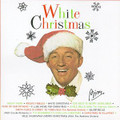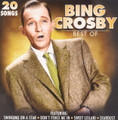 Loading... Please wait...
Loading... Please wait...Categories
- ARTIST
- BIBLES & BOOKS
- **SPECIAL DEALS**
- CHANT
- CHILDREN
- CHRISTMAS
- CONTEMPORARY
- DOWNLOAD MP3s
- DVDs
- ESPANOL MUSICA
- GENERAL CHRISTIAN
- GREETING CARDS
- GIFTS
- INSTRUMENTAL
- INTERNATIONAL
- IRISH
- JEWELRY
- LITURGICAL
- MEDITATION
- OLDIES BUT GOODIES
- PATRIOTIC
- PRAISE AND WORSHIP
- PRAYERS
- ROSARY & DIVINE MERCY CDs
- SEASONAL
- SHEET MUSIC
- TRADITIONAL
- USB DRIVE
- VALLEY ENTERTAINMENT
- WEDDING MUSIC
- A MILLION SPOKES - DVD
Popular Vendors
Our Newsletter
BING CROSBY
Musical career}} Harry Lillis"Bing" Crosby, Jr.(May 3, 1903 – October 14, 1977)[1]was an American singer and actor.[2]Crosby's trademark warm bass-baritonevoice made him the best-selling recording artist of the 20th century, having sold over one billion[3]records, tapes, compact discs and digital downloads around the world.[4]The first multimedia star, from 1931 to 1954 Crosby was a leader in record sales, radio ratings, and motion picture grosses.[5]His early career coincided with technical recording innovations such as the microphone. This allowed him to develop a laid-back, intimate singing style that influenced many of the popular male singers who followed him, including Perry Como,[6]Frank Sinatra, Dick Haymes, and Dean Martin. Yankmagazine recognized Crosby as the person who had done the most for American G.I.morale during World War IIand, during his peak years, around 1948, American polls declared him the "most admired man alive", ahead of Jackie Robinsonand Pope Pius XII.[7][8]Also in 1948, the Music Digestestimated that Crosby recordings filled more than half of the 80,000 weekly hours allocated to recorded radio music.[8]Crosby won an Academy Award for Best Actorfor his role as Father Chuck O'Malley in the 1944 motion picture Going My Way, and was nominated for his reprise of the role in The Bells of St. Mary'sopposite Ingrid Bergmanthe next year, becoming the first of six actors to be nominated twice for playing the same character. In 1963, Crosby received the first Grammy Global Achievement Award.[9]He is one of the 22 people to have three stars on the Hollywood Walk of Fame(a star for motion pictures, radio, and audio recording). Crosby also exerted an important influence on the development of the postwar recording industry. He became the first performer to pre-record his radio shows and master his commercial recordings onto magnetic tape. Through the medium of recording, Crosby constructed his radio programs with the same directorial tools and craftsmanship (editing, retaking, rehearsal, time shifting) used in motion picture production, which became the industry standard. In addition to his work with early tape recording, he helped to finance the development of videotape, bought television stations, bred racehorses, and co-owned the Pittsburgh Piratesbaseball team





 All prices are in
All prices are in